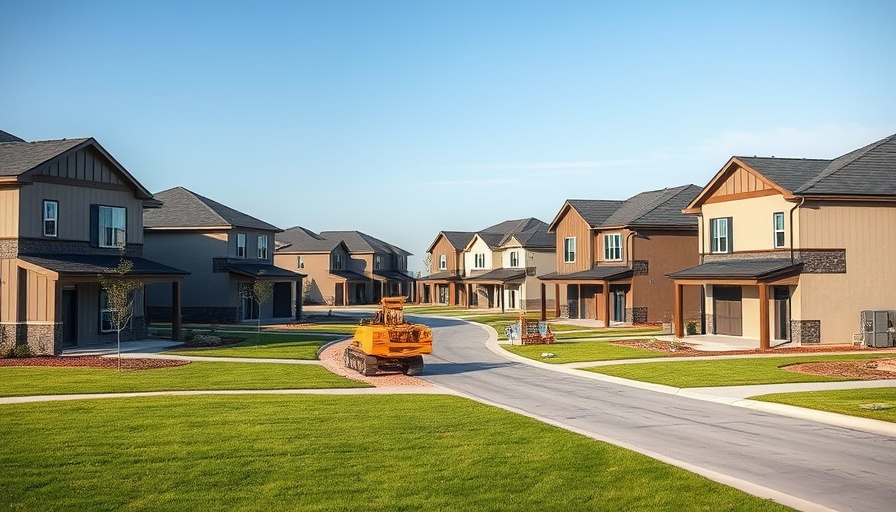
The Ripple Effect of Declining Construction on LISD Enrollment
Enrollment trends within the Lewisville Independent School District (LISD) reflect a growing concern tied intricately to the decline in local construction. The community, once bustling with new housing developments, finds itself facing a new reality that could reshape the landscape of its educational institutions.
Understanding the Decline: What Factors Are at Play?
Over the past few years, LISD has experienced a notable decrease in new student enrollments. As new housing developments halt or slow down, school officials are wrestling with the implications of fewer families moving into the area. Factors contributing to this slowdown include rising construction costs, labor shortages, and broader economic uncertainties that discourage developers from pursuing new projects.
Connecting the Dots: Why Enrollment Matters
Enrollment figures are not just numbers; they are essential indicators of a district's health and future. A decline in enrollment can lead to budget cuts, fewer resources for schools, and ultimately affect the quality of education offered. LISD officials have already reported that these trends may lead to reassessments of staff and services, potentially reducing programs that directly benefit students.
The Impact on Educational Quality and Community Dynamics
The changing enrollment landscape prompts a broader conversation about the vitality of the community itself. Schools serve as focal points in neighborhoods, offering not just education, but communal engagement. As established families age or move away without new families to replace them, schools face an existential threat—fewer resources could mean diminished extracurricular activities, reduced class offerings, and a less vibrant local culture.
Local Actions and Responses: What Is LISD Doing?
In response to declining construction and enrollment, LISD is exploring innovative strategies to maintain its student base and educational standards. This includes outreach programs aimed at attracting families to the district and partnerships with local businesses to stimulate economic activity. Additionally, LISD is reassessing its long-term strategic plans to ensure flexibility and adaptability in the face of changing demographics.
Future Predictions: How Will This Trend Affect LISD?
Looking ahead, the future of LISD will depend significantly on how swiftly the local economy rebounds and what measures are taken to encourage growth. If economic conditions stabilize and attract new residents, enrollment may recover. However, if the trend continues, LISD may have to make tough decisions regarding funding allocation and resource distribution. Understanding these dynamics will be pivotal for both educators and community stakeholders as they navigate this shifting landscape.
Take Action: Be Informed and Engage
As stakeholders in the community, it’s vital for residents and potential newcomers to stay informed about these developments. Engaging in local decision-making processes, voicing concerns, and participating in community forums will help reshape the narrative around education in LISD. The time to be proactive is now—our schools sustain our neighborhoods, and their success depends on our collective action.
In conclusion, the decline in construction directly threatens the future of LISD's enrollment and, by extension, the quality of education offered. Although challenges abound, community engagement and innovation may provide the solutions needed to attract families and foster a healthy educational environment. Together, with active participation and support, we can ensure that LISD retains its vital role in the community.
 Add Element
Add Element  Add Row
Add Row 



Write A Comment